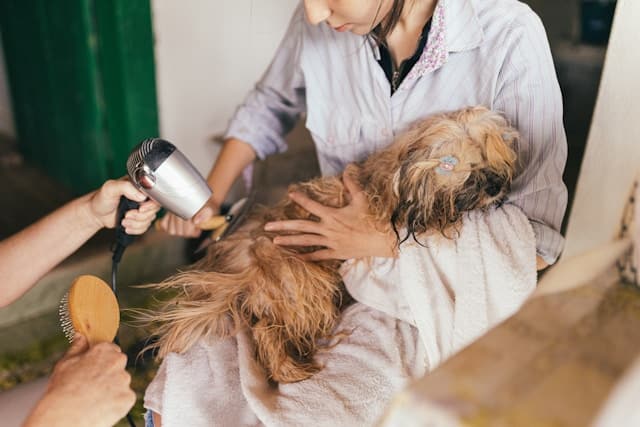The Best Tips for Administering Oral Medication to a Skittish Pet?

In the long run, it’s a rare pet owner who hasn’t faced the daunting task of administering oral medication to their resistant pets. Whether it’s a feisty feline or a skittish pooch, getting them to swallow a pill, capsule, or liquid medication can often resemble a tussle rather than a treatment. However, their health and well-being are at stake, which necessitates mastering this crucial task. This article will provide you with a step-by-step guide, offering professional advice and effective strategies to ensure your pet receives their life-saving medication with minimal fuss.
Understand the Importance of Approach
Before delving into the various techniques, it’s vital to comprehend the role your approach plays when administering medication. A calm, confident demeanor is crucial, as pets can sense their owner’s anxiety and respond accordingly.
A voir aussi : How to Help Your Pet Adjust After Losing a Limb?
When introducing your pet to medication, take things slow. Let them sniff the pill or inspect the syringe. Reassuring them verbally and with gentle strokes will help reduce their anxiety. Avoiding any sudden movements is also essential.
If the pet continues to resist, take a break. Forcing the medication might lead to a negative experience, making future attempts more challenging. Instead, give your pet some time to calm down before trying again.
En parallèle : How to Choose the Right Kind of Protective Footwear for Your Dog’s Hiking Adventures?
Administering Pills to Dogs
Administering pills to dogs can be a challenging task. The primary step is to ensure your dog is calm and comfortable. Start by placing your hand gently over the dog’s head, using the thumb and forefinger to hold the upper jaw. Tilt your dog’s head backward.
Place the pill on their tongue using the other hand, making sure it’s as far back as possible. Then close their mouth and hold it shut, stroking their throat gently to encourage swallowing. Blowing gently on their nose can also prompt them to swallow.
One popular method of administering pills to dogs is masking the pill in food. This can be as simple as hiding the pill in a piece of cheese, or a specially designed dog treat. Before using this method, confirm with your vet that the medicine can be taken with food.
Administering Liquid Medication to Cats
Administering liquid medication to cats demands a slightly different approach. Firstly, prepare the syringe with the correct dosage.
Hold your cat’s head firmly but gently, tilting it slightly backward. Use the syringe to place a small amount of medicine into the side of the mouth, between the teeth and the cheek. Don’t put the syringe directly down your cat’s throat as it might cause choking.
After administering, hold your cat’s mouth closed, while stroking their throat to encourage swallowing. Make sure to reward your cat with their favorite treat or extra cuddling to associate medication time with positive reinforcement.
Turning Medication Time into Treat Time
Another way to make medication time less stressful is to turn it into treat time. Many pets will happily take a pill or liquid medication if it’s hidden in food, but make sure the vet confirms that the medicine can be taken with food.
For dogs, soft treats with a hole in the middle are perfect for hiding pills. For cats, a chunk of their favorite wet food could mask the medicine. Alternatively, there are specially designed pill pockets available in the market that both cats and dogs find irresistible.
Consult Your Vet for Alternatives
If you’re still struggling to medicate your pet, it might be time to consult your vet for alternatives. They may suggest different medication forms like flavored tablets, chewable pills, or transdermal gels that can be absorbed through the skin.
In addition, vets can demonstrate the correct method of administering medicine, along with valuable tips tailored to your pet’s unique needs. Remember, the goal is to ensure your pet receives their medication, and sometimes, that may require thinking outside the box.
Administering medication to skittish pets can indeed be a challenge, but with patience, practice, and these helpful tips, it can become a manageable, stress-free task. Your pet’s health and well-being is a testament to your dedication and love for them.
Turning the Pill into a Snack: The Peanut Butter Trick
The interaction of providing medication doesn’t have to be a stressful experience for you or your pet. In fact, it can be turned into a game or a treat time that your pet looks forward to. One common technique that pet owners find successful is the peanut butter trick. This method is particularly effective for dogs but can be used for cats that enjoy the taste of peanut butter as well.
Start by ensuring that your pet is relaxed. This can be done by sitting them down in their favorite spot or playing with them for a few minutes. Next, take a small amount of peanut butter and conceal the pill within it. The trick here is to use enough peanut butter to completely hide the pill but not so much that it becomes a choking hazard.
When the pill is well-hidden, offer it to your pet like a treat. Dogs are known to love the taste of peanut butter and will likely swallow the pill without even realizing it. If you’re using this method with a cat, you might want to try other food options like tuna or salmon paste, as some cats are not fond of peanut butter.
Remember to consult your vet before using this method to ensure it’s safe for your pet. Also, be sure to monitor your pet closely after administering the medication to ensure they don’t spit the pill out.
Using Tools: The Pill Popper Method
The peanut butter trick won’t work for all pets. Some might be too clever and will eat around the pill, while others might be allergic to peanut butter. If this is the case for your pet, you might want to consider using a pill popper.
A pill popper is a device designed to make administering oral medication easier. It’s essentially a small plastic rod that holds the pill at one end and has a plunger at the other. To use it, you load the pill onto the pill popper, gently open your pet’s mouth using your non-dominant hand, and guide the device toward the back of their throat using your dominant hand.
Once the pill popper reaches the back of your pet’s throat, simply press the plunger to release the pill. Then, gently close your pet’s mouth and hold it shut while stroking their throat to encourage them to swallow.
Again, before using this technique, it’s crucial to consult with your vet. They can demonstrate the correct way to use a pill popper, ensuring you’re comfortable with the process and minimizing the chance of distress for your pet.
Conclusion
Administering medication to a skittish pet can indeed be a daunting task. But by understanding your pet’s behavior, using a gentle approach, and employing creative methods like treat time or tools like a pill popper, you can make the experience less stressful for both you and your pet.
Always consult your vet for any concerns and alternatives if your pet remains resistant. Remember, your pet’s wellness depends on their medication, and as a pet owner, ensuring they take their pills effectively is an essential part of pet care. With patience and knowledge, you can master the art of administering oral medication, ensuring your furry friend remains happy and healthy.
